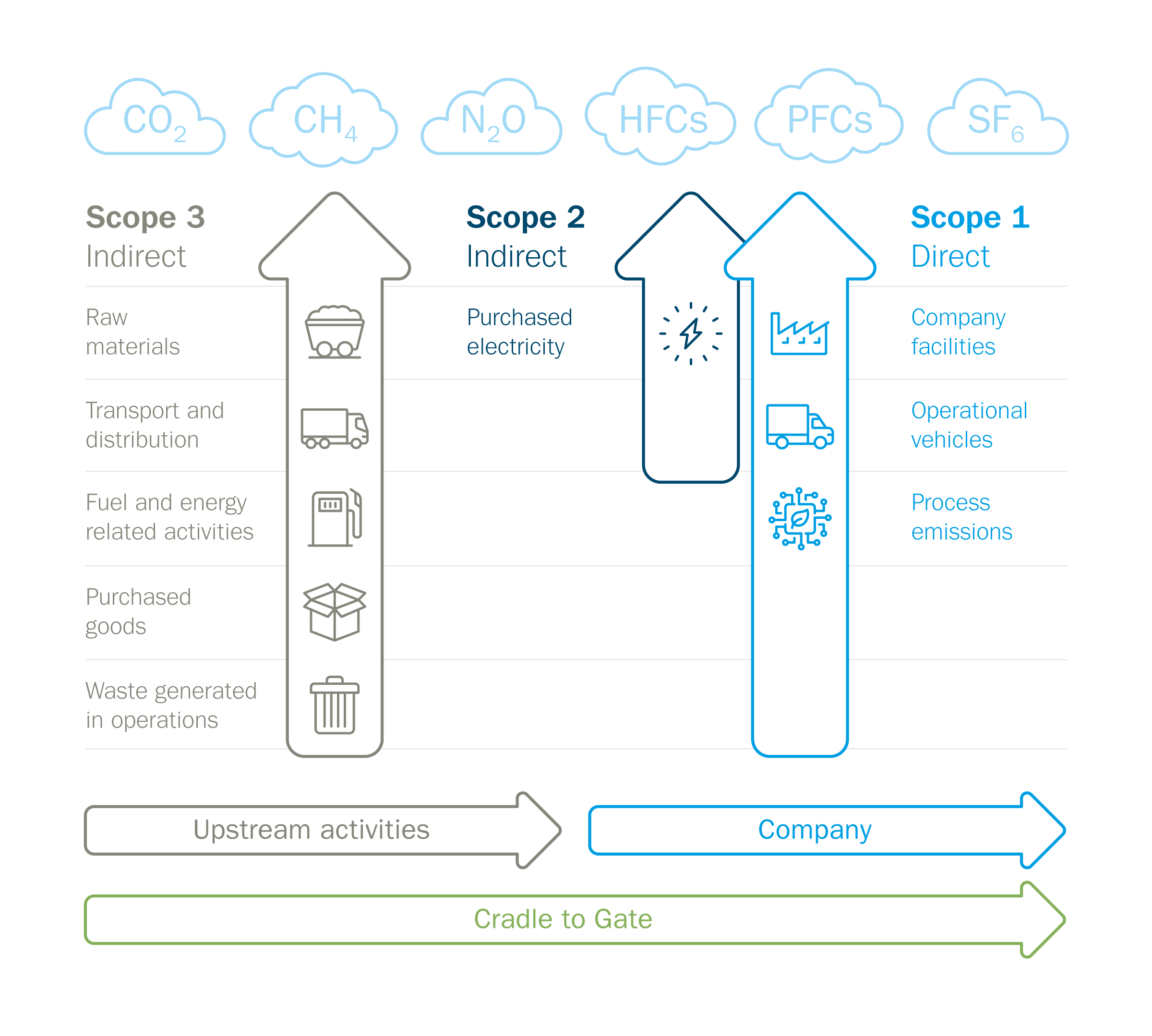Architects traditionally choose stainless steel for a crisp aesthetic that lasts for decades. But as they strive to control the carbon dioxide emissions embedded in construction materials, stainless steel also provides sustainability – and this has just experienced a step change improvement. Jörn Teipel, our Lead Technical Manager for Architecture, explains how.
Over the past five years, sustainability has become a top priority in the construction world. Property developers now view BREEAM (Building Research Establishment Environmental Assessment Method) and LEED (Leadership in Energy and Environmental Design) certification as being essential to attracting high quality tenants and winning planning approval.
As a result, architects and their consultant engineers need the carbon footprint data. This enables them to evaluate and compare design options, as well as materials and suppliers.
Making steel from recycled steel is significantly less CO2 intensive that processing virgin ores. By using at least 90 percent recycled scrap in our materials, hawse have achieved a carbon footprint of 1.8 tonne of CO2 per tonne of crude stainless steel, which is significantly lower than the European average of 2.8 tonne CO2 per tonne. In addition, we use about 80 percent low-carbon electricity in our mills.

New product-specific carbon footprint data
Outokumpu also publishes Environmental Product Declarations (EPDs) for its main products. However, these EPDs provide average emissions data, whereas there is growing demand for more accurate carbon footprint tracking.
To meet this demand, we have now introduced product-specific carbon footprints. This will help the construction industry reduce its carbon footprint and calculate emissions data with greater accuracy. In the case of façades, it will also provide architects with material that has a significantly lower carbon footprint than from other suppliers.
In November 2022, we started providing our customers with the precise carbon footprint of their material. This data appears on the product certificates we provide with our steel deliveries, along with other properties such as yield strength and steel grade.
We calculate that data as a rolling 12-month average using a methodology based on the ISO standard for carbon footprints (ISO 14067) that has been reviewed by engineering consultancy WSP. It takes account of emissions under Scopes 1-3 according to the ISO14040 life cycle assessment. Of these, Scopes 1 and 2 cover the fossil fuels and electricity used, while scope 3 covers input materials like ferroalloys.
The carbon footprint for any stainless steel product varies, depending on the production route and processing steps, as well as the alloys such as nickel and molybdenum that are added to provide corrosion resistance and other properties. In the case of architectural façades, our most widely-used grade is Supra 316L/4044. This austenitic grade can take a lot of scrap input and therefore its carbon footprint is lower than our average figure.
That means that architects and their clients can develop projects with a lower carbon footprint that is calculated to greater accuracy than would be possible with data from EPDs.

A closer look at EPDs for full transparency
Another shortcoming of EPDs is that the data they contain is not always directly comparable between different suppliers and different materials. There can be significant variation in the calculations used in Life Cycle Assessment.
For example, different product category rules (PCRs) may be applied with different allocation methods or a supplier might have overlooked carbon-intensive issues in their supply chain by sourcing “average” Scope 3 values from a database. This is why EPDs from different program operators are not directly comparable.
Therefore, when sustainability is important, it’s essential to ask suppliers for the underlying data and which programs their EPDs are registered under. Only then is it possible to compare material on a like for like basis.
In the longer term, it’s likely that we will see the industry coming into alignment with a standardized process that enables direct and straightforward comparison of data.
The next steps for minimizing emissions
Looking ahead, we are developing a new product line that will further improve sustainability for architectural facades. We are now developing an emissions-minimized product line called Circle Green.
It has a carbon footprint that is 50 % lower than our lower than our regular products, which means it can be up to 92 percent lower than the global average . This is the lowest achieved for stainless steel and is possible due to our effort to minimize emissions throughout our supply chain and production.
We produced our first batch of Circle Green stainless steel in June 2022 for cookware manufacturer Fiskars Group. We view façades as being a priority sector for the new line due to the high level of interest in sustainability.
Beauty and durability as a sustainability advantage
The other vital aspect of sustainability is beauty. By designing buildings that last for many decades and even for centuries, architects protect the Earth’s resources and minimize the life cycle costs.
Stainless steel helps them to do this, as a material that offers a wide range of textures, colors and surface finishes. In addition, as a strong and corrosion resistant material, stainless steel façades provide durability. This enables architects to tightly control a building’s aesthetic – both at the time of its construction and for many years, as shown by the Chrysler building in New York, which was completed in the 1930s and is still pristine.
As a supplier of stainless steel, it is our responsibility to provide material that meets the highest quality and aesthetics and also to drive towards ever-higher sustainability.Want to be up-to-date on architecture?
Watch the recordings of our recent webinar series to discover the possibilities of stainless steel facades.
